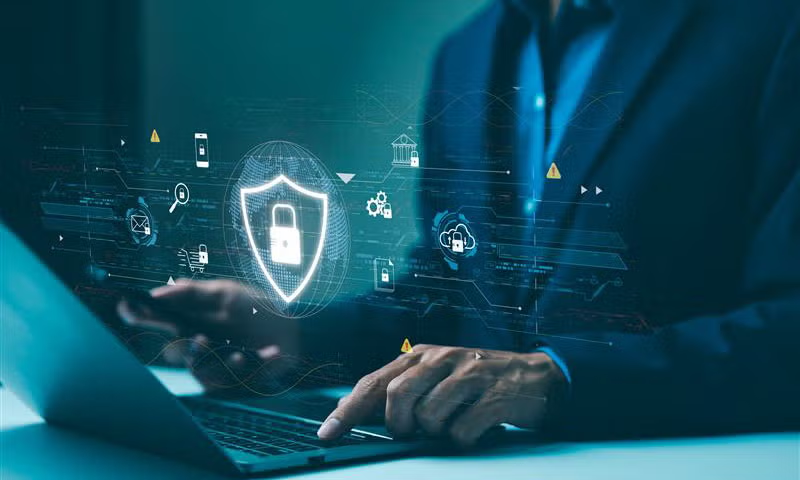🌐 Introduction: The Cybersecurity Landscape in 2025
As we step deeper into the digital age, cyber threats are evolving faster than ever. With AI, IoT, and cloud computing becoming mainstream, cybercriminals are also upgrading their tactics. In 2025, businesses and individuals alike face a new wave of sophisticated attacks that can cripple systems, steal sensitive data, and cause massive financial losses.
This blog explores the top 5 cyber threats dominating 2025 and provides practical defense strategies to help you stay protected in this high-risk environment.
🧠 1. AI-Powered Phishing Attacks 🎯
Phishing has always been a top cyber threat, but in 2025, it’s more dangerous than ever—thanks to AI-generated content. Cybercriminals now use AI to craft hyper-personalized emails, messages, and even voice calls that mimic real people with uncanny accuracy.
These attacks are no longer riddled with spelling errors or generic greetings. Instead, they use data scraped from social media and public records to create messages that feel authentic and urgent—tricking even tech-savvy users.
🛡️ How to Defend:
- Use AI-based email filters that detect suspicious patterns and language.
- Train employees regularly on how to spot phishing attempts.
- Enable multi-factor authentication (MFA) to prevent unauthorized access even if credentials are compromised.
- Verify requests for sensitive information through a second channel (e.g., phone call).
🧬 2. Deepfake-Based Social Engineering 🎭
Deepfakes have moved beyond entertainment and into the realm of cybercrime. In 2025, attackers use deepfake videos and audio to impersonate CEOs, managers, or even family members to manipulate victims into transferring money or sharing confidential data.
Imagine receiving a video call from your “boss” asking for urgent wire transfers—it looks and sounds real, but it’s a deepfake.
🛡️ How to Defend:
- Implement strict verification protocols for financial transactions.
- Educate staff about the existence and risks of deepfakes.
- Use biometric authentication and secure communication platforms.
- Monitor for anomalies in communication tone, timing, and behavior.
🕸️ 3. Ransomware-as-a-Service (RaaS) 💣
Ransomware has become a business model. In 2025, even non-technical criminals can launch devastating attacks using Ransomware-as-a-Service platforms available on the dark web. These platforms offer ready-made malware, customer support, and even profit-sharing models.
Victims are often forced to pay in cryptocurrency, and even after payment, there’s no guarantee of data recovery. The impact on businesses can be catastrophic—downtime, data loss, and reputational damage.
🛡️ How to Defend:
- Regularly back up data and store it offline or in secure cloud environments.
- Patch software and systems to close known vulnerabilities.
- Use endpoint detection and response (EDR) tools to detect unusual behavior.
- Create an incident response plan and test it regularly.
🌩️ 4. Cloud Jacking & Misconfigured Services ☁️
With the rise of cloud computing, misconfigured cloud environments have become a goldmine for hackers. In 2025, attackers exploit weak permissions, exposed APIs, and unsecured storage buckets to gain access to sensitive data.
Cloud jacking can lead to data breaches, service disruptions, and even crypto mining using your infrastructure—without your knowledge.
🛡️ How to Defend:
- Conduct regular cloud security audits and penetration testing.
- Use cloud security posture management (CSPM) tools to detect misconfigurations.
- Implement role-based access control (RBAC) and least privilege principles.
- Encrypt sensitive data both at rest and in transit.
🧠 5. AI-Driven Malware & Autonomous Attacks 🤖
In 2025, malware is no longer static. It’s adaptive, intelligent, and autonomous. AI-driven malware can learn from its environment, evade detection, and even modify its behavior in real-time. These attacks are faster, more precise, and harder to stop using traditional antivirus tools.
Some malware variants can even self-replicate across networks, identify valuable targets, and launch attacks without human intervention.
🛡️ How to Defend:
- Adopt AI-powered cybersecurity solutions that can detect and respond to evolving threats.
- Segment your network to limit the spread of infections.
- Monitor system behavior continuously using threat intelligence platforms.
- Invest in zero-trust architecture, where no device or user is trusted by default.
🧘 Conclusion: Stay Vigilant, Stay Secure
Cybersecurity in 2025 is not just an IT issue—it’s a business survival issue. The threats are more advanced, but so are the tools and strategies to fight them. By staying informed, investing in the right technologies, and fostering a culture of security awareness, you can protect your data, your people, and your future.
🔐 Remember: Cybersecurity is a journey, not a destination. The more proactive you are today, the safer you’ll be tomorrow.


